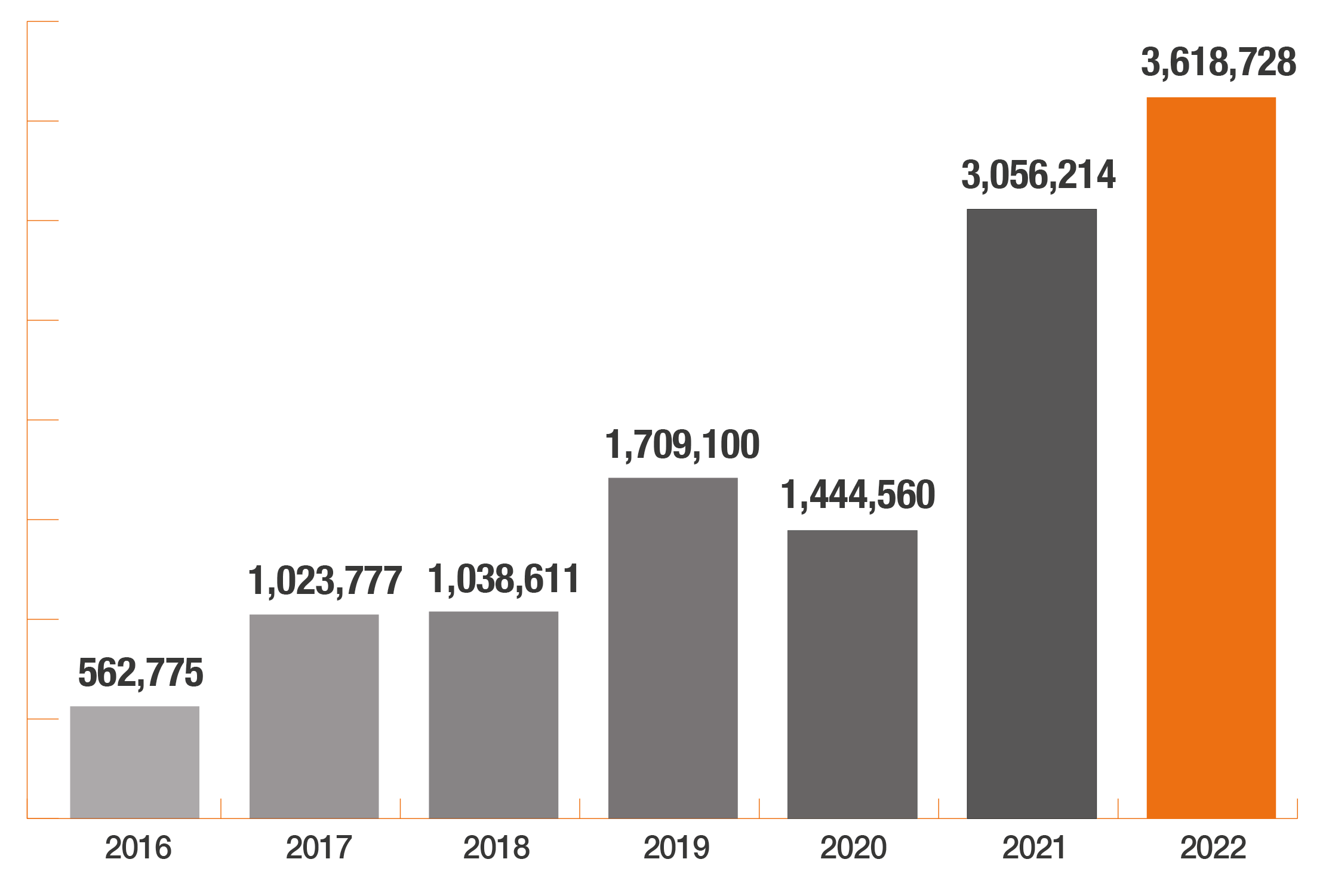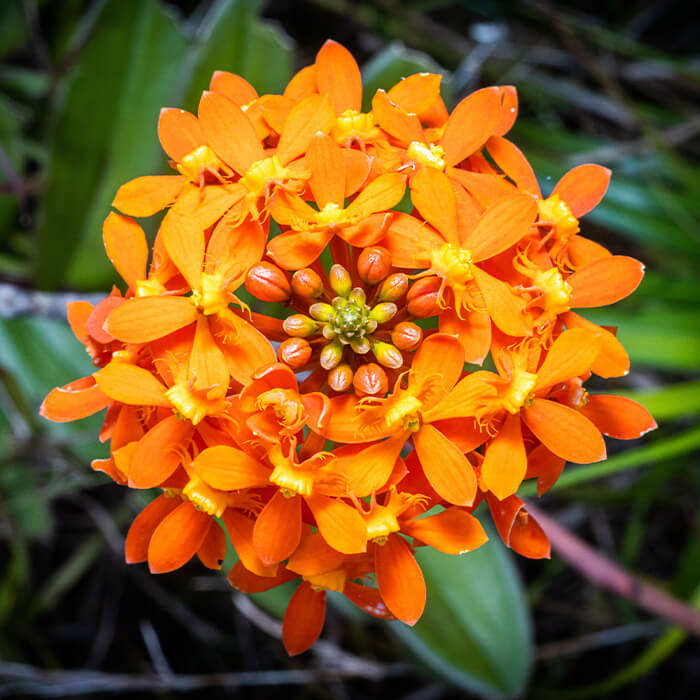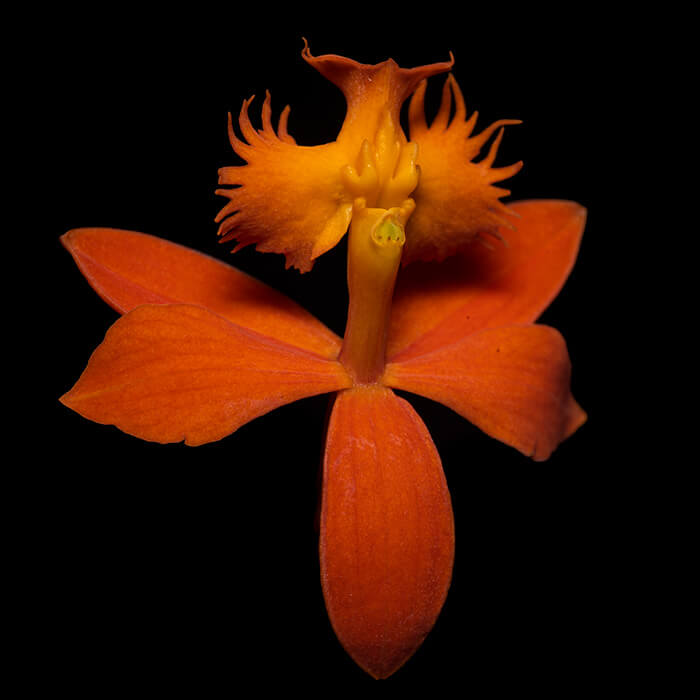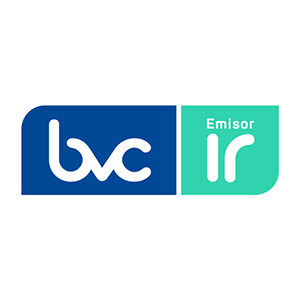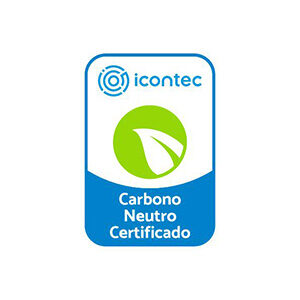The conservation of genetic and eco-systemic biodiversity, both fauna and flora, in the biological corridors where we are present, is a fundamental axis of our Environmental Management
GRI (3-3) We are aware that the loss of biodiversity can represent a risk for Celsia, since we use water, sun and wind to generate energy and operate continuously.
At Celsia, we recognize the importance of the proper management, protection, care and conservation of biodiversity and we are convinced that there is a great opportunity to work on its recovery and maintenance, which we do by implementing actions based on the principle of Mitigation Hierarchy, to have no net loss of biodiversity, by creating a liquid positive impact on our environment.
Since several of our assets and projects are located in highly biodiverse ecosystems that are sensitive to interventions, we maintain a firm commitment to reduce changes in biodiversity.
Our Management
GRI (3-3) (2-23) (2-24) (2-25) (2-29) At Celsia, we build and operate energy-generation, transmission and distribution projects and assets, so our main impacts are related to changes in land use and ecosystem fragmentation.
- We manage impacts by characterizing the flora and fauna through field studies with experts; we map actual and potential effects, both positive and negative, and use tools – such as early risk assessment, Environmental-Impact Assessments (EIAs), and Biodiversity Management and Compensation Plans – to reduce, mitigate, and manage disturbances; besides; we potentiate positive consequences, document biodiversity and publish the results obtained, generating knowledge.
- We apply Compensation Plans and increase the vegetation cover through ecological restoration of the affected ecosystems in order to have a net gain in biodiversity.
- We have a voluntary program for the ecological restoration of watersheds and we promote information, participation and consultation processes with Stakeholders under the principles of good faith, legitimacy, transparency, participation, representativeness, intercultural understanding, bilingualism, opportunity and inclusion and perspective. when appropriate and the cultural context allows.
Impact Management
GRI (3-3) (304-2) (2-23) (2-24) (2-25) (2-29)
- We prioritize impact prevention, reduction and mitigation actions, as well as restoration and compensation measures for residual effects. We make early identification of risks and control them with the implementation of Environmental Management Plans and follow-up and monitoring in our assets in operation and new projects.
- We recognize that the non-net loss of biodiversity is the basis of any action, which is why we put ourselves before the risks on it from the early stages of the projects and throughout their life cycle. We believe that cooperation and joint work make it possible to conserve and restore ecosystem services and biodiversity.
- We publish information on biodiversity, generating scientific and academic knowledge. We have a firm commitment to avoid the loss of biodiversity by creating a positive impact in our environment of action.
At Celsia, we are making progress in updating our Socio-Environmental Management Procedure by incorporating international standards, such as Performance Standard 6 of the International Finance Corporation (IFC) and the Equator Principles, among others.
From this derives the Protection and Conservation of Biodiversity, Ecosystem Services and Sustainable Management of Living Natural Resources Guide, the objective of which is to establish guidelines and practices throughout the life cycle of assets, aimed at sustainably managing biodiversity, ecosystem services and mitigating impacts by guaranteeing continuous improvement, the efficient use of natural resources, the consolidation of relationships of mutual respect with all social actors, legal compliance and voluntary and financial initiatives to which the Organization adheres.
To materialize all the guidelines, we bet on:
- A Socio-Environmental Management System that addresses biodiversity and ecosystem services.
- We manage the impacts from the Mitigation Hierarchy throughout the life cycle of the assets, in which we will give greater development options to projects that have a minimal impact on ecosystems and biodiversity.
- We will continue to create alliances with third-party experts to carry out research that allow us to make decisions and contribute to knowledge.
- We will disclose biological data to strengthen knowledge and the richness of biodiversity in our operating environments.
- We will continue with voluntary actions for ecological restoration, ecosystem services and biodiversity, through the ReverdeC Program.
In 2022, we created the ReverdeC Foundation to promote socio-environmental processes of participatory ecological restoration in various ecosystems, generating a positive impact on biodiversity and the social fabric. We contribute to the conservation of strategic tropical dry forest, humid montane, high Andean, paramo and mangrove ecosystems, strengthening community nurseries.
Commitment and Assessment
Commitment to Biodiversity
The Commitment of Our Own Operations and those of the Supply Chain
Celsia is committed to not carrying out projects, works or activities in protected areas of the IUCN Categories I – IV and World-Heritage Areas, such as biosphere reserves, priority areas for the conservation of biodiversity, Ramsar sites, areas of importance for the conservation of birds (AICA, in Spanish), among others. We manage the stages of the life cycle of our projects or assets in operation under the principle of Mitigation Hierarchy and no net loss of biodiversity to prevent, minimize, reduce and mitigate impacts, implementing restoration and compensation measures.
Mitigation Hierarchy
We have applied the Mitigation Hierarchy (avoid, minimize, restore and compensate) when operating in areas of important biodiversity, whether in the country or in the world.
To manage the impact of new projects and assets under construction and in operation, we apply the Mitigation Hierarchy through which we execute actions to avoid, reduce, mitigate and manage impacts on biodiversity and ecosystems, restoring and compensating for residual impacts. In the early planning phase of new projects, we apply Geographic-Information Systems (GIS) to verify that they do not affect areas of global importance for biodiversity. We give a greater development option to those projects that have a minimal impact on ecosystems, biodiversity and ecosystem services.
Partners and Allies
At Celsia, we work with external partners to help us fulfill this commitment. The main partners are:
Academy and State Entities:
- The National University of Colombia – Medellín Campus.
- Pacific University.
- National Aquaculture and Fisheries Authority (AUNAP).
- The Farallones de Cali National Natural Park.
- Regional Autonomous Corporations: CVC, Corpoguajira, Corantioquia, CRA, CVS, Cornare, Cortolima.
- The Alexander von Humboldt Biological Resources Research Institute – the Biodiversity Information System (SIB, in Spanish) Colombia allied experts.
- The Rural Landscapes Corporation.
- Association of Users of the Tuluá and Morales Rivers (ASURTUMO, in Spanish).
- Forest Management and Environmental Consulting.
- Refocosta.
- Plyma.
- Bioadvisors from Colombia.
- Proinsa Group.
- Savia Ambiental S. A. S.
- Kiweyu.
- Grupo Argos Foundation.
- Guayacanal Foundation.
- Tekia.
- USAID – Paramos and Forests Program.
No Net Loss of Biodiversity
Our Goal: By 2025, 100% of new projects and facilities in operation will have a Risk Assessment for Biodiversity or Biotic Management Plans to achieve no net loss of biodiversity.
Target Net Loss or Improvement in Biodiversity
GRI (3-3)
Period to Achieve the Goal: Between 2020 and 2025.
In 2022, the Sincé and Tuluá Solar Farms came into operation, as well as the Tesorito Thermal Power Plant, in Colombia.
Currently, 21 of 26 generation facilities in operation (O), new solar farms (P) and incoming projects have a Biotic Management Plan, which addresses the impacts on biodiversity generated by the construction and operation of the projects and facilities. In addition, the generation facilities in 2022 had at least one georeferenced study on biodiversity. The Biotic Management Plans are oriented to implement actions of no net loss – and, when possible, a net gain – of biodiversity and are prepared following the principle of Mitigation Hierarchy.
The tools and mechanisms used to measure our impact on biodiversity are:
- Early risk assessments on biodiversity.
- Environmental Impact Assessments (EIAs) on biodiversity.
- Environmental Management Plans (EMPs) on biodiversity.
- Biodiversity Monitoring and Follow-up Plans..
- Environmental Compliance Reports (ECRs).
- Compensation plans for loss of biodiversity.
No Net Loss (NNL) of Biodiversity.
- Requirement for our own operations.
- Requirement for Tier-1 Suppliers.
Commitment to No Deforestation
Period to Achieve the Target: No net deforestation is guaranteed by 2025 (compensation with future reforestation).
- Requirement for our own operations.
- Requirement for Tier-1 Suppliers.
- Monitoring system used to ensure compliance with the commitment of the entire Group.
- Compliance throughout the Group with forest regulations and mandatory standards.
- Commitment with suppliers and partners to manage and mitigate deforestation risks.
The generation plants, the high- and medium-voltage lines, the transmission and distribution solar farms and the projects have Environmental Management Plans (EMPs) aimed at avoiding, reducing, managing, mitigating and – ultimately – compensating for the impacts generated by the operational activities of each project, which contemplate compensation processes with restoration of vegetation cover within the framework of the regulations applicable to each one.
Biodiversity Exposure and Assessment
GRI (304-2) At Celsia, we evaluate and map the sites that are under our responsibility. This allows us to determine their level of importance, as well as the potential impacts that our operations may have on ecosystems.
Number and Areas of Evaluated Sites
- Generation plants include hydroelectric, thermal, wind farm and solar farms.
- The increase in the number of facilities by 2022 corresponded to the entry of the Tesorito Thermal Generation Plant and the Sincé and Tuluá Solar Farms, in Colombia.
- We have 26 installations corresponding to hydro, wind, thermal and solar plants, of which 21 are evaluated and mapped in terms of biodiversity.
ReverdeC
ReverdeC is a voluntary ecological-restoration initiative, with the goal of planting 1,000,000 trees per year, in 10 years. For 2022, we exceeded our planting goal three and a half years in advance.
Our Figures
Figures as of December 31, 2022
Valle del Cauca
Principal Basins Restored:
- Río Riofrío
- Río Nima
- Río Calima
- Río Tuluá
- Río Amaime
- Río Yotoco
- Río Meléndez
- Río Garrapatas
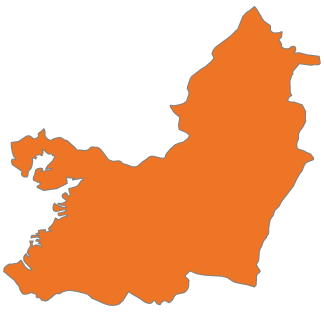
Río Riofrío
Río Nima
Río Calima
Río Tuluá
Río Amaime
Río Yotoco
Río Meléndez
Río Garrapatas
Antioquia
Principal Basins Restored:
- Río Cartama
- Río Claro
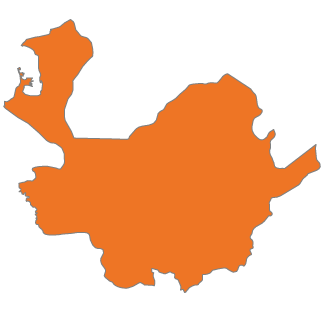
Río Cartama
Río Claro
Tolima + Atlántico
Principal Basins Restored:
- Río Saldaña
- Río Coello
- Río Gualí
- Rio Lagunilla
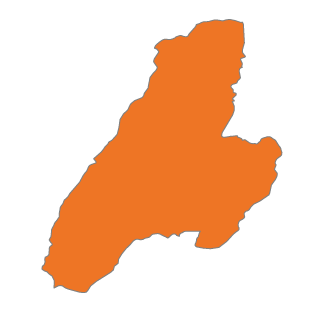
Río Saldaña
Río Coello
Río Gualí y Lagunilla
and more than 30% are women
and more than 30% are women
(Native)
- We created the ReverdeC Foundation to continue promoting socio-environmental processes of participatory ecological restoration in different ecosystems, generating a positive impact on biodiversity and the social fabric.
- We contributed to the conservation of strategic ecosystems, tropical dry forest, humid montane, high Andean, paramo and mangrove, strengthening community nurseries.
Principal Results in 2022
GRI (3-3)
We updated the Environmental Policy including the conservation, restoration and management of biodiversity as material issues, committing ourselves to manage it under the principles of the Mitigation Hierarchy and no net loss of biodiversity.
We restored 1,201 hectares with the planting of 3,618,728 trees in the ReverdeC Program, with which we achieved 12,453,765 trees planted since the beginning of the program in 2016, exceeding the proposed goal.
We carried out 11 monitorings of flora and fauna associated with the implementation of Management Plans and environmental licenses in the Cucuana, Prado, Calima, Gualaca, Bajo Anchicayá, Amaime, Riofrio I, Riofrio II, Alto and Bajo Tuluá Hydraulic Power Plants and the Tesorito Thermal Power Plant.
One Hundred Percent (100%) of the Generation and T&D assets (substations, solar farms, transmission and distribution networks) have evaluation and mapping for biodiversity, from environmental permits, Environmental Management Plans (EMPs) and Environmental Impact Assessments (EIAs) and environmental license.
We planted 81,168 trees in 77 hectares, in Antioquia, Córdoba, Tolima and Valle del Cauca within the Compensation Plans for Biodiversity Loss with species on the International Union for Conservation of Nature (IUCN) Red List in the categories: critically endangered, endangered, vulnerable and in least concern.
We had a successful functionality test of the fish-passage structure for the species Sabaleta (Brycon henni) in the Tuluá River, Valle del Cauca.
We donated 174 hectares of conservation areas in the Tuluá River basin, in compliance with the environmental license and the One Percent (1%) Investment Plan for the Alto and Bajo Tuluá Power Plants.
We delivered the ecological restoration of 7,500 wax palms (Ceroxylon quindiuense) and the isolation of 52 hectares in six wooded relicts at the Cucuana Hydroelectric Plant in Tolima.
We completed the floristic characterization of 68% of the corridors of high- and medium-voltage lines in Valle del Cauca and 35% for Tolima.
We developed a variant to the layout of the Chinú – Toluviejo Transmission-Line Project so as not to affect the dry forest ecosystem with the presence of species, such as the red howler monkey (Alouatta seniculus).
We contribute to the knowledge of biodiversity with two new species of orchids discovered in Valle del Cauca, Colombia, a finding that was published by the Harvard Papers in Botany (HPB) journal of Harvard University.
The orchids were named Epidendrum calimaense and Epidendrum celsiae, in homage to the place where they were found and to Celsia. These species were discovered on a property owned by the Company, where ecological-restoration works were being carried out, as part of a pilot test for soil control and erosion.
GRI (3-3) Short-, Medium- and Long-Term Objectives:
Short Term(0 to 2 years)
- Advance in the development of technological packages for the captive breeding of Tarpon (Brycon meeki), Barbudo (Rhamdia saijaensis), Yellow gill (Ciclassoma ornatum) and Sabaleta (Brycon oligolepis) at the Bajo Anchicayá Hydroelectric Plant.
- Strengthen the disclosure of biological information in association with SIB Colombia, on the Company’s biodiversity studies.
- Implement the Biodiversity-Variable Monitoring Platform and achieve its articulation with the Sustainability Information System.
- Restore and compensate 100% of the areas intervened by the operation and the maintenance and execution of new transmission and distribution projects, specifically in the high-, medium- and low-voltage lines.
- Compensate environmental obligations with the establishment of native species for areas intervened in operation, maintenance and execution of new transmission and distribution line projects, substations and solar farms.
- Monitor the efficiency of the Biodiversity-Compensation Process in the La Unión – Quebrada Grande transmission line, in Valle del Cauca.
Medium Term(3 to 5 years)
- Start ichthyic stocking with Tarpon (Brycon meeki), Barbudo (Rhamdia saijaensis), Yellow gill (Ciclassoma ornatum) and Sabaleta (Brycon oligolepis) species, in the Anchicayá River, in accordance with the guidelines of the National Aquaculture and Fisheries Authority (AUNAP, in Spanish).
- Finish habitat studies for aquatic fauna and flora from the middle basin to the mouth of the Anchicayá River.
- Strengthen the Management Plan for the Farallones National Natural Park in Cali, and the natural Resource-Management Plans of the Community Councils of the Black Communities of Bella Vista and Aguaclara, at the Bajo Anchicayá Hydroelectric Plant.
- Define and support conservation lines for three strategic fauna or flora species, identified in the Calima, Salvajina, Prado and Central Menores Hydroelectric Plants.
- Monitor the red howler monkey (Alouatta seniculus) on the Chinú – Toluviejo Transmission Line, in the Department of Sucre.
- Preparation of protocol for the management, sighting and location of the manatee species (Trichechus manatus manatus) on the Toluviejo – Bolívar 220 Kv Line.
Long Term(6 or more years)
- Support the conservation of six strategic fauna and flora species, identified in the Calima, Salvajina, Prado, Alto Anchicayá, Bajo Anchicayá, Cucuana Hydraulic Power Plants, and in the Minor Power Plants (Alto Tuluá, Bajo Tuluá, Nima I, Nima II, Riofrío I, Riofrío II, Río Cali I, Río Cali II, Amaime, Rumor, Río Piedras, San Andrés and Hidromontañitas)..
- Support the conservation of the red howler monkey (Alouatta seniculus) on the Chinú – Toluviejo Transmission Line in the Department of Sucre.
- Every five years, characterize the fauna of the Tuluá Solar Farm, in Valle del Cauca.
AUNAP: National Aquaculture and Fish Authority
Electrical Substations: An installation that is part of an electrical-power system; its primary objective is to modify and establish the voltage levels of an electrical infrastructure, to facilitate the transmission, distribution and final use of electrical energy.
Solar Farms: These are massive solar-panel installations to generate power for the electrical grid from photovoltaic solar energy.
Forest Exploitation: The extraction of products from a forest, which ranges from obtaining them to the moment of their transformation.
Forest Compensation: The measures aimed at compensating and remunerating communities, regions and – in general – the environment for the impacts or effects caused by a project or activity on plant cover, which cannot be prevented, corrected or mitigated.
Floristic Characterization: A study used to compare plant communities based on their species richness and highlight aspects of their ecology.
Censuses: A quantitative and qualitative evaluation tool that accounts for tree species and their ecological importance.
Native Species: Those species that belong to a certain region or ecosystem.

